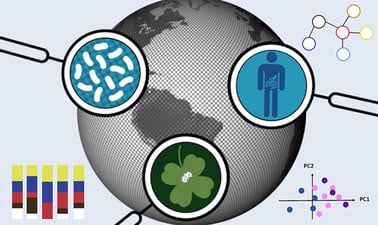- Level Awareness
- Ratings
- Duration 30 hours
- Course by KU Leuven
- Total students 755 enrolled
-
Offered by

About
Microorganisms play a major role in the biosphere and within our bodies, but only a tiny fraction has been cultured so far. Microbiome data, that is the genetic information of microorganisms, is therefore an important window into the hidden microbial world.
Microbiome data analysis elucidates the composition of microbial communities and how it changes in response to the environment. When analyzing sequencing data, we learn whether microbial diversity differs across conditions and identify links between microbes. In brief, microbiome data analysis gives us a first idea of how a microbial ecosystem works.
This course will illustrate with the help of real-world example data how to carry out typical analysis tasks, such as comparing microbial composition and diversity, clustering samples and computing associations. If you plan to work with microbiome data, this course will get you up to speed.
The instructors are experienced bioinformaticians who are internationally known for their analysis of large-scale microbiome data sets.
What you will learn
- How and why microbiome data are collected
- How to extract species and function counts from sequencing data
- The definitions of richness, evenness and diversity
- How to compare diversity and microbial composition across conditions
- How to compute and interpret taxon and function associations
Skills you learn
Syllabus
Module 0: Introduction
Study guide, R basics and a help forum for programming questions
Module 1: Introduction to microbiome data
Sequencing techniques, data types (16S, WGS, metadata), example applications
Module 2: From sequences to counts
Quality control of reads, taxonomic and functional assignment
Module 3: Comparing microbiomes
Relative versus absolute abundance, taxonomic and functional richness, evenness and diversity
Module 4: Ordination
Dimension reduction: arranging samples according to their taxonomic and functional composition in two-dimensional space
Module 5: Taxon/function associations
Network construction: computing and interpreting associations between taxa and functions
Module 6: Your favourite microbiome
Databases and journals for microbiome data and guidelines for doing your own analysis
Module 7: Final exam
Complete the course by passing the quiz or by completing a microbiome analysis
Auto Summary
Discover the fascinating world of microbial sequencing with the course "How to Analyze a Microbiome." Offered by edX, this engaging program is designed to introduce learners to essential analysis techniques for understanding complex microbial data. Over the span of 30 hours, participants will explore the fundamental methods used in microbial sequencing, making this course perfect for those looking to enhance their knowledge in the science and engineering domain. Whether you're a professional seeking to deepen your expertise or a beginner aiming to build a solid foundation, this course caters to all levels of awareness. Flexible subscription options, including Professional and Starter plans, ensure that you can choose the best fit for your learning needs. Join now and unlock the secrets of the microscopic world with expert guidance and cutting-edge content tailored to your learning journey.

Karoline Faust

Sam Röttjers


